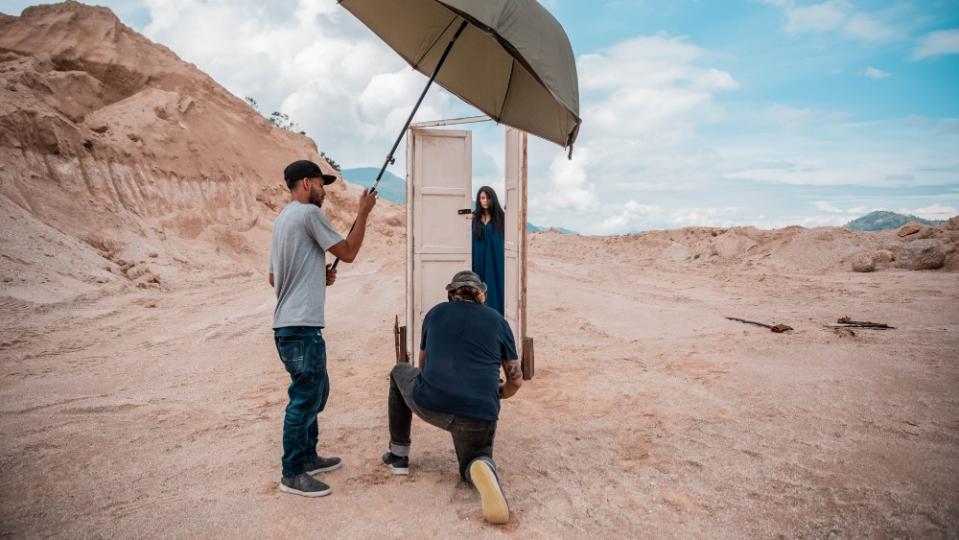Jorge Monteallegre’s ‘Devil’s Breath,’ a Medellín Meditation on Love, Loss, and Other Drugs

Life in the fast lane in Medellín comes screeching to a halt in “Devil’s Breath,” a drug-saturated Sanfic WIP from writer-director Jorge Monteallegre. Co-produced by Tres 33 Films and Hawaii Film Productions, the film follows the star-crossed story of Ana and Matias, two young and beautiful club-goers who meet and fall madly in love. When Ana is drugged by her dealer with scopolamine and overdoses, Matias must balance a journey back to her through either revenge or shamanic ritual.
Starring Angela Cano (“Frontera Verde”) and Fredy Morales Restrepo (“Pink Punk: The Mirror”), “Devil’s Breath” bowed at Sanfic in the Works in Progress section, and is another in the current surge of Latin American projects putting the region on the map. Sanfic WIP sidebar saw a 30% increase in applicants this year, and will package four of their WIPs as a lineup for Sanfic Goes to Cannes, a Cannes Film Market project showcase.
More from Variety
Sanfic Industria Underscores Growth With Massive Prize Avalanche
'A Fantastic Woman' Editor Soledad Salfate Boards 'Matryoshka,' a Double Sanfic Winner (EXCLUSIVE)
Variety spoke to Monteallegre ahead of his film’s screening at Sanfic.
What about Matias and Ana’s love drew you to tell this story?
What inspired me to tell this story is the fear of losing love, the fact that you finally find that person, and that they take her away in the blink of an eye. It is not easy to find someone unconditional who loves you for who you are, and not for what you have, who sees beyond what society imposes, pure and free love as Ana says: Could you live only on love?
What did you want to say about modern drug culture in “Devil’s Breath?”
“Devil’s Breath” is a portrait which talks about youth and society in Medellín, a very Colombian reality where young people have unfulfilled dreams. Without any doubt, it is the synthetic era, consuming cocaine and smoking marijuana are things of the past. Millennials use “Tuci,” its chemical definition is 2CB, and it is what predominates in bars and nightclubs as “pink cocaine.” As a screenwriter, I dared to capture the mystical, magical and mysterious in a story which is 100% urban.
The film’s namesake is a very powerful, dangerous drug often associated with crime. Is this drug being used more today, whether for recreation or crime?
Brugmansia, borrachero flower, burundanga, or mythically “the devil’s flower,” is an ancestral sacred plant with many names that have been used by native South American shamans in the Amazon for thousands of years. This plant has multiple uses; one in particular is to communicate with the dead. Shamans use it to contact former shamans to get answers to current problems in their tribe. Unfortunately, the borrachero flower, like other ancestral plants such as coca, has been desecrated in Colombia and misused for crimes. It is usually used in the form of scopolamine or commonly burundanga. When it is blown in the face the victim loses the will, with lack of free will and without the ability to control their actions, leaving the victim totally vulnerable to the command of his attacker. The burundanga is known in the streets as “the devil’s breath” because it steals your soul.
Visually, “Devil’s Breath” is vivid and colorful, despite its dark themes. Can you speak about the cinematography of the film?
I had the pleasure of directing while operating the camera. The story is guided from Matias’ perspective, so we were always walking with him. The camera is always in POV mode to make the audience feel as they were there with the characters. I use close-ups, with wide angles, to be with Matias in a very intimate way creating an internal perspective and portraying the way he feels. Handheld camera, giving a raw and very real urban sense with a small line between fiction and documentary. Low angle, wide-angle, close up and zenith shots are used, generating an empty space in Matias’ head like someone who is elevated in his own thoughts. But at the same time like someone is watching from above.

Credit: Tres 33 Films
Best of Variety
Sign up for Variety’s Newsletter. For the latest news, follow us on Facebook, Twitter, and Instagram.

